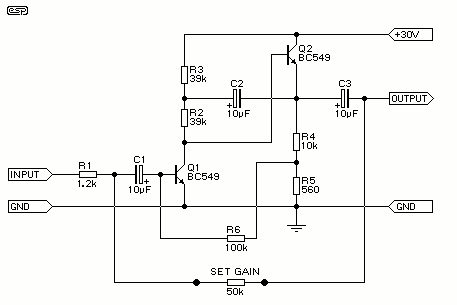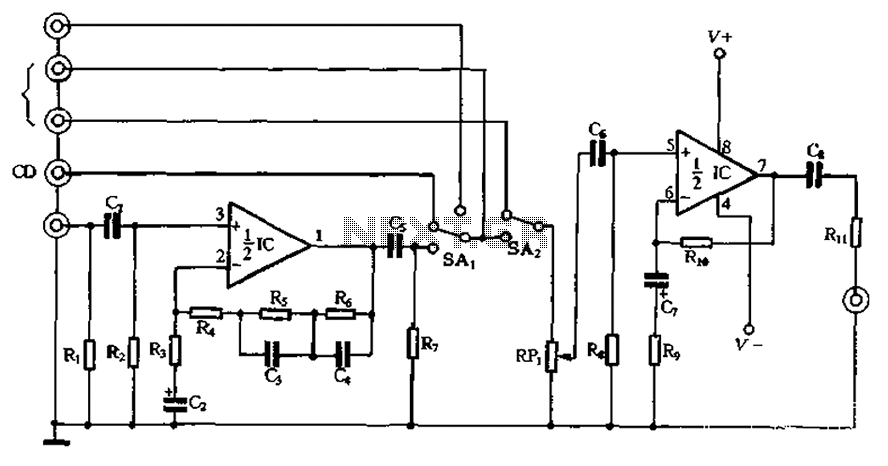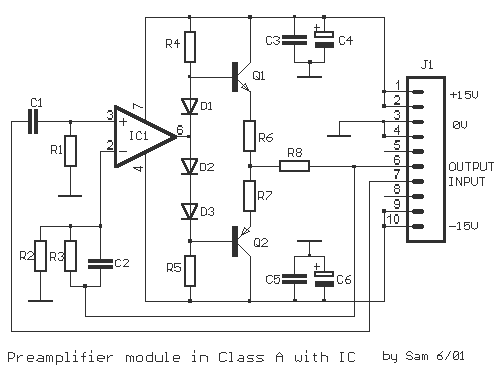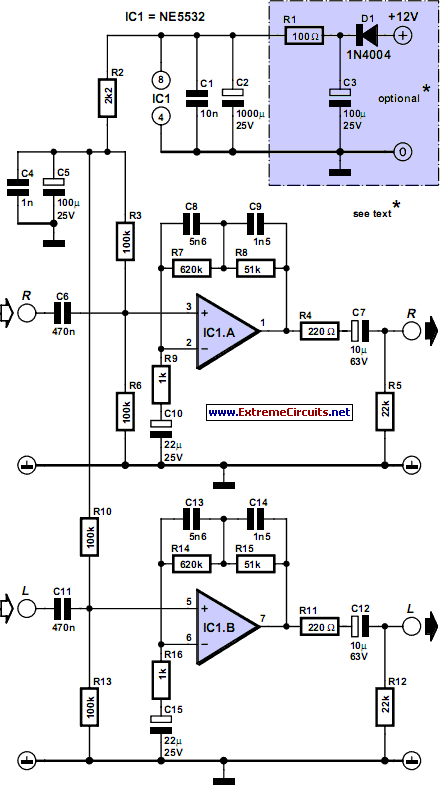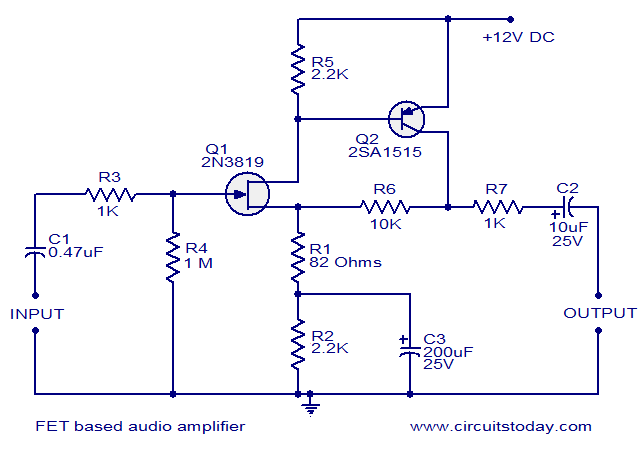
Magnetic Cartridge Preamplifier (LT1028CN8)
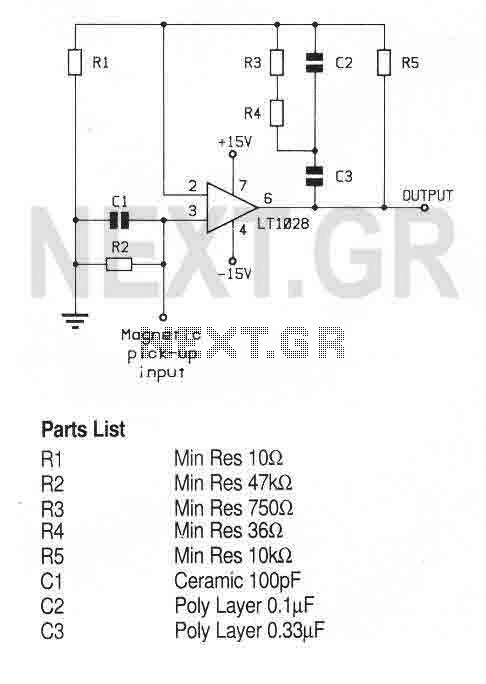
A high performance op-amp that sets a new standard of excellence in noise performance only 0.9nV/Hz with low source resistances. Total harmonic distortion is less than 0.01%. The op-amp is suitable for use in high quality audio, low noise frequency synthesizers, infrared detectors etc. More: Particularly where the source resistance is under 1Kohm.
The described operational amplifier (op-amp) is engineered to deliver exceptional noise performance, achieving a low noise level of 0.9 nV/√Hz. This characteristic is particularly advantageous in applications requiring high fidelity and precision, such as audio processing and sensitive detection systems. The op-amp's performance is optimized when interfaced with low source resistances, particularly those below 1 kΩ.
The total harmonic distortion (THD) is specified to be less than 0.01%, indicating that the op-amp can reproduce signals with minimal distortion, making it ideal for high-quality audio applications where signal integrity is critical. This low THD ensures that the output closely resembles the input signal, preserving the original audio characteristics.
In practical applications, the op-amp can be configured in various circuit topologies, including inverting and non-inverting amplifiers, integrators, and filters. Its low noise figure makes it suitable for low noise frequency synthesizers, which require clean signal generation, as well as infrared detectors, where signal clarity is paramount for accurate detection and measurement.
When designing circuits with this op-amp, it is essential to consider the power supply requirements, input and output impedance, and thermal management to maintain optimal performance. The selection of passive components, such as resistors and capacitors, should also complement the op-amp's specifications to achieve the desired performance metrics in the final application.A high performance op-amp that sets a new standard of excellence in noise performance only 0.9nV/Hz with low source resistances. Total harmonic distortion is less than 0.01%. The op-amp is suitable for use in high quality audio, low noise frequency synthesizers, infrared detectors etc.
Particularly where the source resistance is under 1Kohm. 🔗 External reference
The described operational amplifier (op-amp) is engineered to deliver exceptional noise performance, achieving a low noise level of 0.9 nV/√Hz. This characteristic is particularly advantageous in applications requiring high fidelity and precision, such as audio processing and sensitive detection systems. The op-amp's performance is optimized when interfaced with low source resistances, particularly those below 1 kΩ.
The total harmonic distortion (THD) is specified to be less than 0.01%, indicating that the op-amp can reproduce signals with minimal distortion, making it ideal for high-quality audio applications where signal integrity is critical. This low THD ensures that the output closely resembles the input signal, preserving the original audio characteristics.
In practical applications, the op-amp can be configured in various circuit topologies, including inverting and non-inverting amplifiers, integrators, and filters. Its low noise figure makes it suitable for low noise frequency synthesizers, which require clean signal generation, as well as infrared detectors, where signal clarity is paramount for accurate detection and measurement.
When designing circuits with this op-amp, it is essential to consider the power supply requirements, input and output impedance, and thermal management to maintain optimal performance. The selection of passive components, such as resistors and capacitors, should also complement the op-amp's specifications to achieve the desired performance metrics in the final application.A high performance op-amp that sets a new standard of excellence in noise performance only 0.9nV/Hz with low source resistances. Total harmonic distortion is less than 0.01%. The op-amp is suitable for use in high quality audio, low noise frequency synthesizers, infrared detectors etc.
Particularly where the source resistance is under 1Kohm. 🔗 External reference
